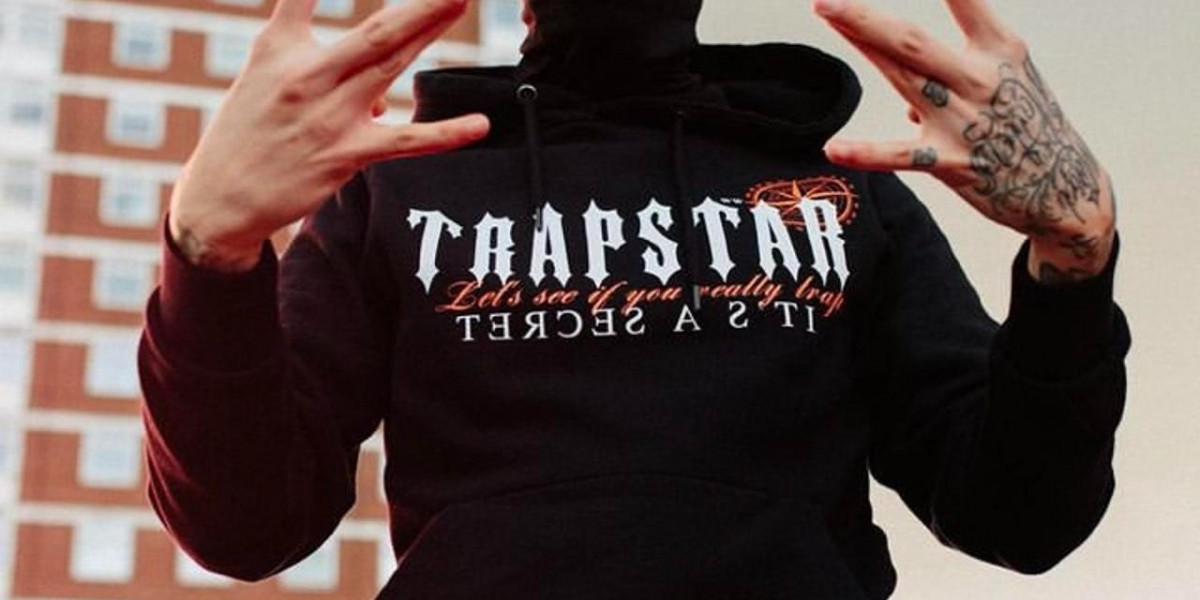Streetwear has always been more than clothing—it’s a voice, a culture, and a statement. From the graffiti-covered walls of New York in the 1980s to today’s global fashion scene, streetwear has reflected the lives, struggles, and creativity of those who live it. Among the many brands that have emerged, Trapstar holds a unique position. Founded in London, the label has become a symbol of the streets, embodying grit, resilience, and authenticity while crossing into mainstream fashion without losing its roots.
Trapstar isn’t just a clothing brand. It’s a representation of urban life, a story told through bold designs, cryptic messaging, and a connection to the community it was born from. But why does Trapstar resonate so deeply with the streets? Let’s explore the reasons.
The Origins of Trapstar: Born from the Underground
trapstar was founded in the mid-2000s by friends Mikey, Lee, and Will. Unlike many fashion houses that start with investors and glossy campaigns, Trapstar began humbly—selling t-shirts out of car trunks and creating designs inspired by their surroundings in West London.
The brand name itself, “Trapstar,” reflects a lifestyle rooted in street culture. “Trap” refers to hustling, survival, and grinding against the odds, while “star” symbolizes aspiration and success. This balance of struggle and ambition is something anyone from the streets can relate to.
The founders built the brand organically, relying on word of mouth, exclusivity, and their local community—authenticity that still fuels Trapstar today.
Clothing as a Reflection of the Streets
Trapstar designs speak the language of the streets. Unlike polished luxury houses, their graphics, bold logos, and cryptic slogans mirror the realities of urban life.
Bold Aesthetics: Hoodies, tracksuits, and graphic tees dominate collections, giving wearers a sense of identity and visibility.
Hidden Messages: Trapstar is known for designs with “coded” or reversible graphics, appealing to those who see fashion as both a statement and a secret language.
Dark Palettes: Black, red, and grey dominate, echoing the gritty environments that inspire the brand.
This isn’t clothing that ignores reality—it embraces it, turning the streets’ struggles and triumphs into wearable culture.
Celebrity Co-Signs and Cultural Credibility
Trapstar’s rise to international prominence wasn’t powered by traditional advertising. Instead, it grew through celebrity co-signs from figures embedded in both street and mainstream culture.
Rihanna was one of the first global stars to wear Trapstar publicly.
Jay-Z and A$AP Rocky embraced the brand, bringing it visibility in the U.S.
UK artists like Stormzy, Skepta, and Giggs frequently wear Trapstar, cementing it as a staple in the UK grime and rap scene.
These endorsements weren’t just marketing strategies—they were natural connections. Trapstar clothing resonated with artists because it reflected their own stories of struggle, ambition, and authenticity.
Trapstar and Music: The Soundtrack of the Streets
One reason Trapstar represents the streets so effectively is its deep ties to music culture. In the UK, grime and drill music are inseparable from urban life, and Trapstar has become the unofficial uniform of these movements.
Wearing Trapstar is a way for fans to align themselves with the sounds and voices of their communities. It’s not just about fashion—it’s about belonging to a culture that speaks truth to power, unafraid of addressing poverty, inequality, and resilience.
Music and streetwear have always been connected, and Trapstar embodies that bond perfectly.
The Power of Exclusivity
One of Trapstar’s strongest appeals is its use of exclusivity. Early on, the brand adopted a “secret society” model, with hidden drops, limited releases, and cryptic marketing.
Pop-Up Culture: Items were often sold at pop-ups or through personal networks before being available online.
Limited Runs: Many pieces are released in small quantities, increasing their desirability.
Mystique: Even the logo placement—sometimes subtle, sometimes bold—creates an air of secrecy and identity.
This exclusivity mirrors the streets, where not everyone is meant to have access. Owning Trapstar means being part of an inner circle, a reflection of the brand’s roots in underground culture.
From the Streets to High Fashion
While Trapstar is deeply rooted in the streets, it has also transitioned into the high-fashion world without losing credibility. Collaborations with major brands and retailers, including Puma and Selfridges, have allowed Trapstar to expand globally.
Yet unlike many brands that water down their identity when moving into luxury spaces, Trapstar has maintained its core ethos. Its collections still reflect the grit of West London, even as they hang in premium boutiques. This duality—street grit with high-fashion reach—makes Trapstar stand out in today’s fashion landscape.
Trapstar as a Symbol of Resilience
At its core, Trapstar resonates with the streets because it represents resilience. Many who wear the brand connect with the struggle of rising above circumstances, of hustling to survive and thrive.
The name itself—Trapstar—is aspirational. It acknowledges the reality of the grind but points toward the dream of shining like a star. This message resonates globally, from the UK to the U.S. to urban communities worldwide.
When someone wears Trapstar, they’re not just wearing clothing—they’re embodying the story of perseverance and ambition.
The Global Influence
Though Trapstar is a UK-born brand, its impact extends globally. In the U.S., Europe, and Asia, streetwear enthusiasts gravitate toward Trapstar for its authenticity and cultural credibility.
The globalization of music genres like grime and drill has only amplified its reach. International fans who connect with the sound also adopt the fashion, turning Trapstar into a global streetwear staple.
This expansion proves that while Trapstar is born from the streets of West London, its message resonates universally.
Why Trapstar Represents the Streets
When we ask why Trapstar represents the streets, the answer lies in its DNA:
Origins: Built from nothing, rooted in authenticity.
Designs: Clothing that mirrors the raw aesthetics of urban life.
Music Connection: A deep bond with grime, drill, and hip-hop.
Exclusivity: Drops that reflect the inner-circle nature of street culture.
Resilience: A brand built on the duality of struggle and aspiration.
Trapstar doesn’t just sell clothing; it sells identity, belonging, and pride for those who understand the culture it comes from.
Conclusion
Trapstar https://trapstarofficialshop.com/ represents the streets because it was born from them, shaped by them, and still speaks to them. Its designs, exclusivity, and cultural ties ensure it stays true to its roots, even as it grows globally. For many, wearing Trapstar is more than fashion—it’s a declaration of resilience, ambition, and authenticity.
In a fashion world where many brands adopt streetwear aesthetics without living the culture, Trapstar stands apart. It is not inspired by the streets; it is the streets.













